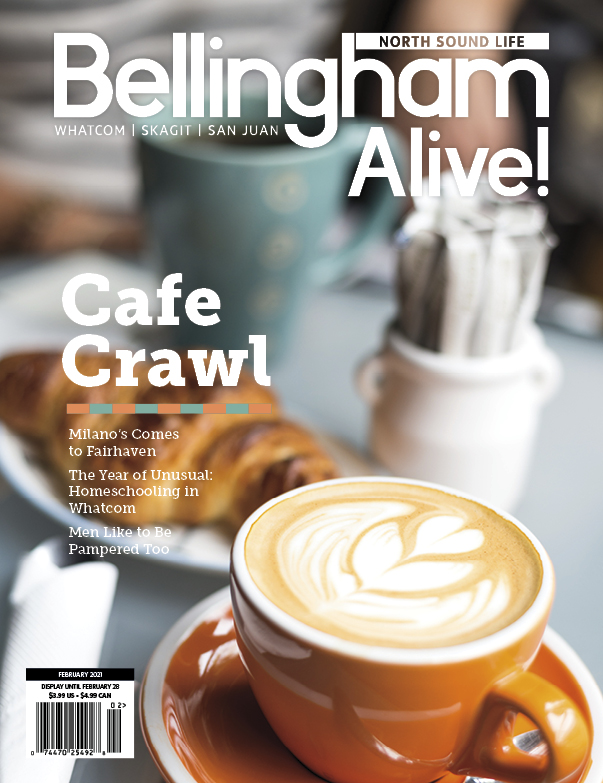The Middle Fork Nooksack River is cold and murky, cascading through cedar and hemlock forests typical of northwest Washington. Moss-covered boulders, sword ferns, and willows dot its banks. Its icy waters trickle from glaciers atop Mount Baker. Follow the river downstream and it meets the main channel, snaking through farmland and towns until it empties into the bay.
The Middle Fork flowed in this way for millennia. But when the city of Bellingham built a diversion dam on the Middle Fork in 1961 to supplement the city’s water supply, the river’s natural course was disrupted, cutting off salmon spawning habitat and devaluing the river in the eyes of the Indigenous people who have always lived there.
Decades of negotiations finally brought the dam down in late summer 2020, restoring fish passage to the river and providing an example of a growing trend in which Indigenous groups, scientists, and city officials work together to address species loss caused by human impacts and climate change.
More Than a River
The Nooksack River and its three tributaries, the North, Middle, and South forks, have been home to the Nooksack people for thousands of years. The Middle Fork is called Nuxwt’ìqw’em in the Nooksack language, which means “always murky.” Unlike the other two forks of the Nooksack, which were shared with other area tribes, the Middle Fork was exclusively Nooksack territory, giving it immense cultural significance for the tribe.
Before Bellingham constructed the diversion dam on the Middle Fork, the river had been “unchanged for time immemorial,” says Trevor Delgado, the Tribal Historic Preservation Officer for the Nooksack Indian Tribe. Delgado works to educate the community, both tribal and non-tribal members, on the rich history of the Nooksack people. He also reviews city, state, and federal projects that could impact Nooksack cultural resources.
“We as the Nooksack people always lived according to how the river was,” he says. “We never had to do anything [to change it.]”
In addition to serving as a valuable fishing and gathering grounds for the Nooksack community, the river also holds spiritual significance.
“It was a place of meditation; it was a place of gathering yourself,” Delgado explains.
The dam changed all that. Its design did not incorporate fish passage, even though state law at the time required it, and over the decades, fish populations plummeted. The river’s Chinook salmon, steelhead, and bull trout were listed as Federally Threatened Species under the Endangered Species Act (ESA). Beloved Southern resident killer whales of nearby Puget Sound, for which Chinook is an important food source, also declined. And the spiritual power of the Middle Fork Nooksack River diminished in the eyes of the Nooksack people.
The Nooksack Tribe was not federally recognized in 1961, so they were not consulted before the dam was constructed, (though even federally recognized tribes rarely had a say in government projects on their land). But the tribe surely could have predicted the far-reaching ecological consequences that ensued after the dam was built. They had lived on the river for thousands of years, and intimate knowledge of the area and its resources had been passed down over generations.

Working Together to Protect Our Waters
Recently, Indigenous communities have begun working alongside scientists and local governments to implement strategies based on Indigenous knowledge for adapting to and reversing these rapid environmental changes.
Delgado, among other Nooksack members, worked closely with the city during the dam removal process. Another key player was Ned Currence, who serves as the Fisheries and Resource Program Manager for the Nooksack Tribe. Since beginning work as a biologist for the tribe in 1998, he has brought together government and local organizations to protect salmon and trout in the Nooksack waterways.
“The tribes and tribal staff jointly manage the fisheries and shellfish resources with the Washington Department of Fish and Wildlife,” Currence says. “We share the goal of recovering ESA-listed species, like Chinook.”
With his extensive knowledge of fisheries and water resources, Currence has been essential in advancing a restoration plan for the Middle Fork that worked for all parties.
According to Currence, discussions that began in the 1990s led to additional partnerships in the early 2000s between the Nooksack Tribe, Lummi Nation (another local tribe with ties to the Nooksack river), and city and government organizations. Yet years of failed design proposals followed, impeded by prohibitively high costs of restructuring the dam and the city’s water diversion system. Finally, in 2019, American Rivers and the Paul G. Allen Family Foundation joined the team and provided additional funding and support, in part because controversies were resolved among all parties in advance.
“When jurisdictions work together, funding agencies take notice and that increases one’s odds [of receiving support],” says Currence.
The new design called for partial removal of the dam and reconstruction of the diversion system further upstream. The innovative solution includes a fish screen inside the new diversion tunnel and an additional offshoot that trapped fish can use to return to the river.
A Small Way of Healing
Work is now complete, and the Middle Fork flows freely. Miles of previously inaccessible habitat are once again open to native salmon and trout, which have not been seen in the upper regions of the river since before the dam was built. Analyses predict that, over time, this habitat expansion will allow fish populations to recover; and more Chinook means more food for the endangered Southern resident killer whales, of which fewer than 80 remain.
Though so much has changed on the Middle Fork in the last two centuries since the arrival of European settlers, Delgado says the dam removal has offered a small way of healing.
“Things are going in the right direction,” he says.
He hopes the city of Bellingham will place a cultural significance marker at the site of the former dam which would include the Nooksack name for the river and communicate a message to future generations: “Let it serve as a reminder [that] today it takes multiple parties to get this work done.”
For more like this, check out our Life section here.





